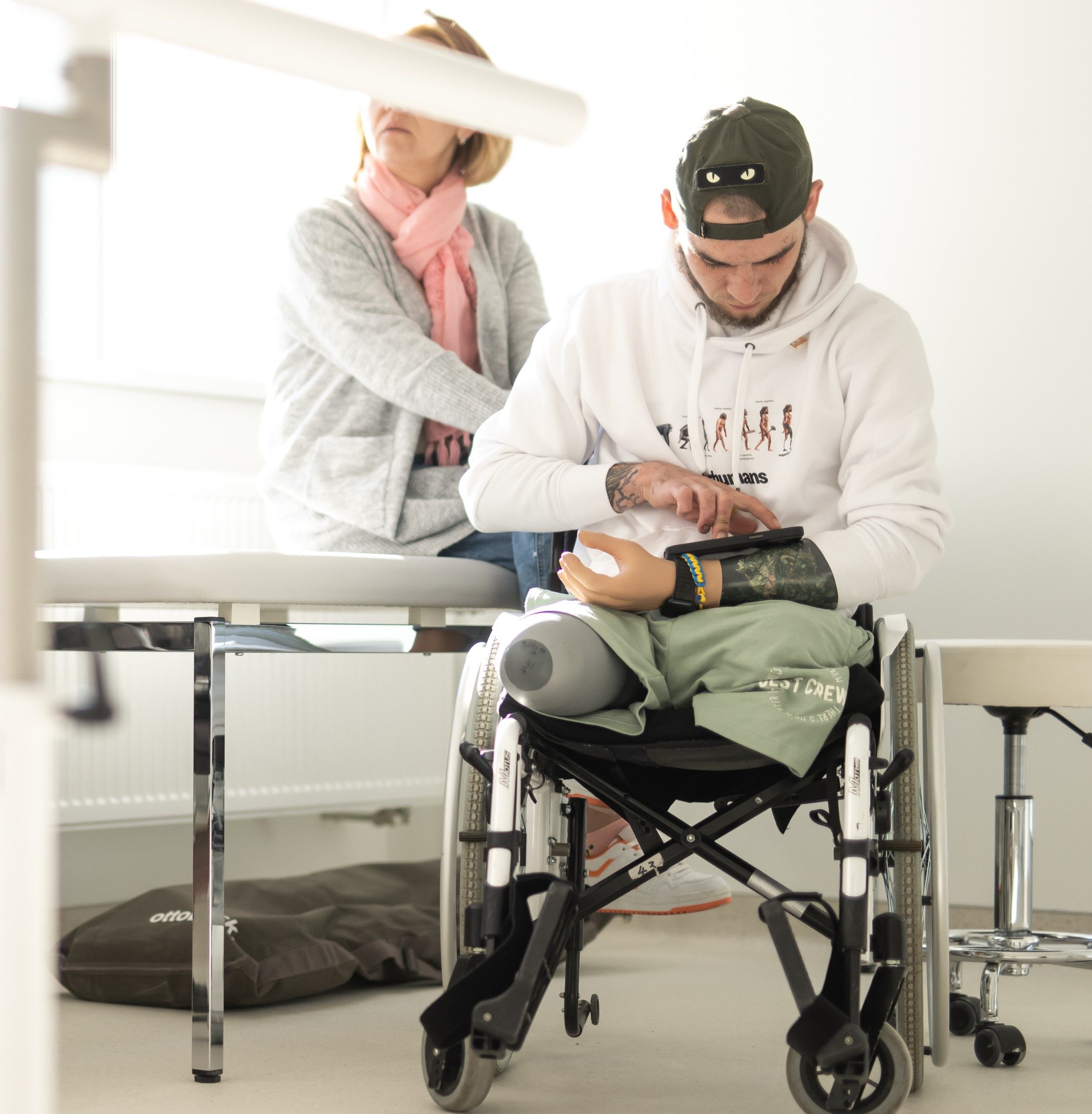In the September edition of FORTIS magazine , NHS innovators Dr Layla McCay, John Watkins, Tara Donnelly, Deborah El-Sayed and Gary Ferguson are rising to the challenge of this winter’s upcoming pressures
WORDS: JO WATERS
FORTIS magazine – the magazine from Health Spaces.
This Winter’s Tale
By using and adapting existing spaces, utilising a strategic approach to estate space, healthcare planning, introducing virtual wards and AI forecasting, experts are showing how we can relieve the pressure for our NHS this winter. How will NHS Trusts rise to the challenge?
Dr Layla McCay, Director of Policy at the NHS Confederation, says: “Winter is always a tough time and we need to ensure that we are resilient well before the season hits. Last year we warned of the need to act fast when it comes to unlocking funding for winter pressure. For example, adult social care discharge funding came in the middle of the winter crisis. Funding like this needs to be released well before winter, so leaders can prepare their services and make the best decisions for their communities rather than scramble to make use of the investment in the middle of winter,” she adds.
In July 2023 the NHS announced that care ‘traffic control’ centres to speed up discharge, additional ambulance hours and extra beds are part of the wide-ranging plans to prepare for winter. “However, there is over a £10 billion maintenance backlog due to the decade of austerity measures, which affects investment in IT equipment, estates and infrastructure to enhance patient safety, and productivity. The government must recognise that the backlog in maintenance needs to be addressed,” says Layla.
“If left unaddressed, this will undermine efforts to reduce waiting lists and add on to strains during winter and that’s before investments in digital innovation that can help people stay out of hospital.”
Healthcare planning for extra capacity
NHS departments are having to think and plan creatively and to provide extra capacity for surges in demand, learning the lessons from previous winters, adapting existing space and creating new spaces where needed.
In 2021, Health Spaces worked with Peterborough City Hospital to provide a modular 24-hour Urgent Treatment Centre (UTC) alongside the hospital’s A&E department to ease pressure and provide a more joined-up service for patients. A bespoke approach to standardised modules was utilised to minimise disruption to the live hospital.
John Watkins, Contracts Manager at North West Anglia NHS Foundation Trust, which includes Peterborough, Hinchingbrooke and Stamford hospitals, outlines what’s coming up for Trusts now. Like Layla, he points to the frustration for NHS teams around not knowing exactly if, or when, a winter preparedness pot of money that Trusts can bid for will be announced.
“It can be difficult to roll out a scheme at short notice, it leaves us no time for healthcare planning, but we have several longer-term schemes in progress to help us cope with this winter’s demand,” says John.
“We have commissioned a 20-bed modular ward, located externally, plus we will double the size of our ambulance-receiving rapid assessment centre to 10 beds by using space within the hospital – that should be finished by the end of the year.”
Hybrid working helps free up space
Finding space within the hospital to provide more beds and clinical areas is an ongoing challenge, but the work-from home trend is helping to free up rooms previously used for administration. This is positive but, as John points out, it can be a challenge to adapt rooms for clinical with the right systems, such as ventilation.
How can virtual wards help?
Another way to cope with winter pressures on hospitals is to treat more people at home. Almost half a billion pounds has been invested in virtual wards in two years, says Tara Donnelly, former Chief Digital Officer at NHS England and founder of Digital Care Limited.
“Ten thousand NHS patients a fortnight who would otherwise have been in hospital are now waking up in their own beds. Between May 2022 and May 2023, the total number reached 100,000,” says Tara. “What has happened in the past is that virtual wards have been seen as this very separate thing, and then there’s the urgent care pressure, but of course the application of remote monitoring fits just as well for these patients.”
Tara shares the example of the Hertfordshire Community NHS Trust, which has started using a mature virtual ward in conjunction with their community response team.
“The team go out on two-hour response calls equipped with tech kits and help people in the home. Some urgent care response teams also have direct access to the ambulance stack for category three and above or are doing that in partnership with their local ambulance service.
“The next stage may be that we kit up paramedics to be able to see and treat the patient at home, rather than make that very binary decision about either getting them to hospital or leaving them at home. For a cohort of patients, it would be great to be able to keep an eye on them for a couple of days and to start them on a remote monitoring pathway right away. I do think the potential is enormous.”
Tara stressed that virtual wards to date have focused very much on acute needs and that’s because our bed capacity lags behind international comparators, but she believes there’s as much to go after in long-term conditions.
“Chronic Obstructive Pulmonary Disease (COPD) is a good example. It’s highly seasonal, increasing in the winter months, and a key element of winter pressures,” says Tara. “Some of the best sites in the country are halving the rates of admission for those supported at home with quite simple technology.
“I would like to see long-term conditions being treated in the same way – that’s about 70% of hospital bed use, so it ought to make an enormous difference to how it feels in hospital, with benefits like having an elective
programme that runs through the year.”
She says no-one wants to cancel urgent cancer operations, “but we are still doing it and that last winter was dreadful.
“If we can get our bed occupancy levels to a healthy level we could have more care at home – thousands and thousands monitored at home – then I think it could make a real difference to our elective programme and be better for staff.”
She also emphasised the fact that virtual wards are popular with patients, saying the feedback was “extraordinary”, with patients using phrases like “over the moon” and “indebted to the NHS” for the convenience of having their care at home.
“What we need now is investment at ICS level in digital tools that will have a payback in the longer term. Evidence from other countries shows that long-term condition management with virtual wards saves money and clinical capacity,” says Tara.
What are the implications for estates and hospital-building though – will we still need as many physical beds if more people are going to be treated at home? “Yes, as we are still under-bedded in the NHS compared to Organisation for Economic Co-operation and Development (OECD) comparators,” answers Tara.
“What I’d love to see now is us using remote monitoring to ‘winter-proof’ people. We can offer clinical support remotely and get the right data to plan for admissions. But it does have to be at scale, and we do have to get on with it.”
Can healthcare planning with AI help cope with winter demands?
Artificial Intelligence (AI) is fast emerging as an essential tool for predicting demand, managing patient flow in real time and allowing managers to plan strategically. The government has already invested £123 million in 86 technologies, which is helping patients by supporting stroke diagnosis, screening, cardiovascular monitoring and managing conditions at home. Another £21 million of investment is now being rolled out in the NHS. Trusts have been invited to bid for funding for new tech to help diagnose patients more quickly for conditions such as cancer, strokes and heart conditions.
Patients across Bristol, Somerset and Gloucestershire are to benefit from new ‘intelligent care traffic control centres’, which will see frontline staff and hospital managers get real-time, 24/7 access to key data from across the region in one place for the first time.
The new centres will pull in data on ambulance services, NHS 111, acute providers, virtual wards, social care, GP and mental health providers to show capacity across the system.
It will be used to view activity and staffing levels, and upcoming patient demand, but also to visualise harm as well as forecasting future demand.
Another pilot project by the University Hospitals of North Midlands NHS Trust saw hospital admissions reduce by between 40% and 50% over eight months among 80 patients with moderate/high frailty. The project used AI-assisted monitors to predict when a patient may be unwell so that clinicians could intervene early with treatment and prevent a hospital admission. Bristol, North Somerset and South Gloucestershire (BNSSG) ICS have asked British AI firm Faculty to build the new intelligent control centres.
The work follows Amanda Pritchard’s call for “data-driven war rooms” to help hospitals take stock of all activity and performance for the first time.
BNSSG ICS Director of Transformation and Chief Digital Officer, Deborah El-Sayed, says: “By analysing live data feeds, these new technologies will give us a deeper understanding of activity, capacity and demand right across our health and care system and allow us to be much more proactive in our approach to managing patient ‘flow’.
“For health and care partners, that will mean much more efficient use of our resources and better service performance, with reduced waiting times and more timely discharge from our hospitals. For local people, it will mean better informed care plans, a better experience of services and, hopefully, better outcomes.”
The ICS have worked with Faculty, which also developed the NHS A&E admissions forecasting tool, now managed by NHSE and available through the NHS to every Trust and ICS in England. This predicts ED admissions up to three weeks in advance for the hospital/Trust/ICS and region to allow operational teams to make strategic resourcing decisions based on forecasted admissions. Once the initial control centre is launched, BNSSG and Faculty will continue to deploy AI functions that help managers understand not only what is happening, but what’s going to happen, why and what staff can do about it. This includes forecasting patient flow, patient harm and healthcare planning to improve operational decision making and UEC performance across the region.
Gary Ferguson, Business Development Director of Faculty, says: “We are using operational AI to help Trusts and systems get ahead of the fire in terms of winter preparedness for 2023.
“Hospitals possess a wealth of data and information, but it is all historical, backward-looking, up to near real-time, telling the system what has happened, and the dashboards and spreadsheets that operational leaders are bombarded with do not help make meaningful decisions.” Gary says using AI models populated with the powerful system data allows an ICS to forecast and predict where their operational challenges will be this winter.
“Using AI models populated with the powerful system data allows an ICS to forecast and predict where their operational challenges will be this winter.”
Similar technology has already been used elsewhere. In Wales, AI developed by Faculty is being used to predict a patient’s length of stay upon arrival and forecast when and where they will move within a hospital. At the Hywel Dda University Health Board, it is estimated more than 3,000 bed days will be saved, with over 900 elective patients treated using this recouped capacity.
“Operational AI augments current ICS data systems and allows an ICS to understand what is going to happen, why it is going to happen and what can be done about it, as well as the implications of pulling those mitigation levers on future flows and forecasts,” says Gary.
“All of this helps the NHS prepare for the winter ahead.”
(c) Dialogue Content Marketing Ltd 2023. FORTIS magazine.
Read more
This NHS winter resilience article was written for the September edition of FORTIS magazine; a forum for the NHS to share ideas, innovations and case studies. To read the publication in full and download a digital copy. visit FORTIS magazine.
FORTIS magazine is a Health Spaces Ltd publication.




